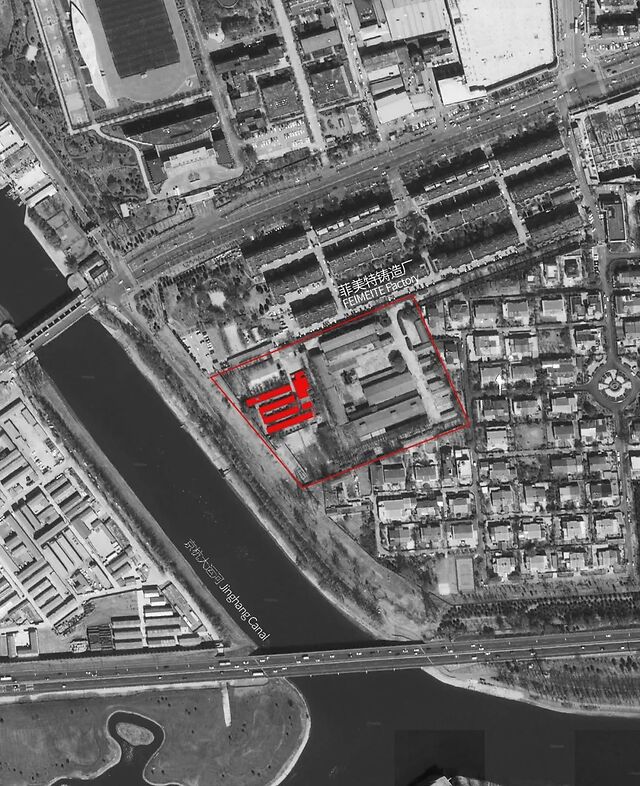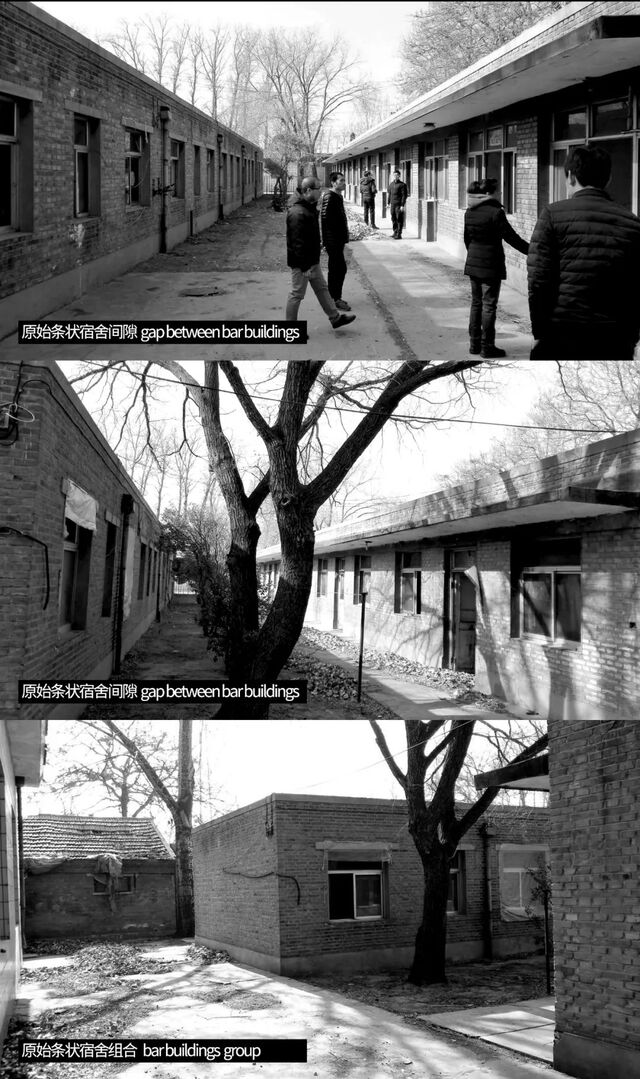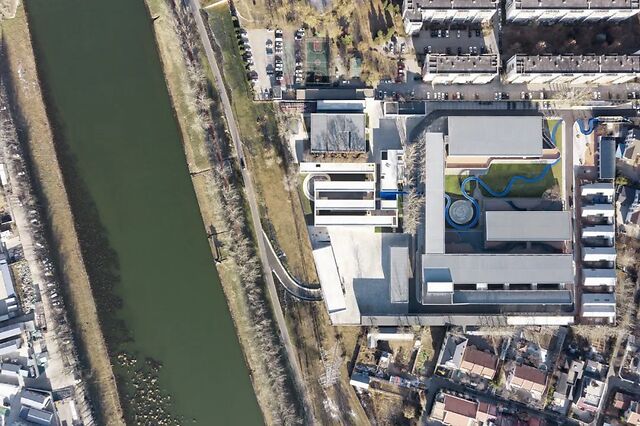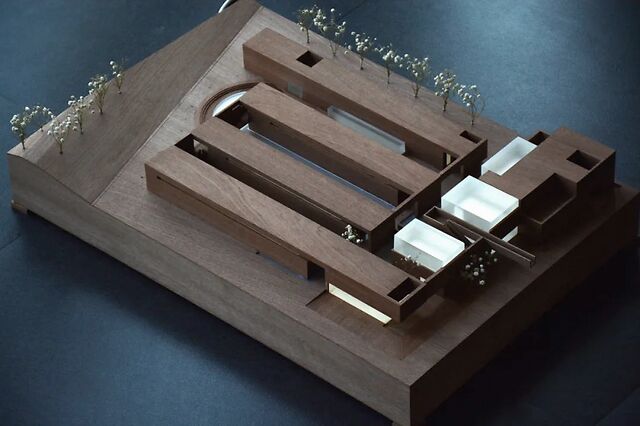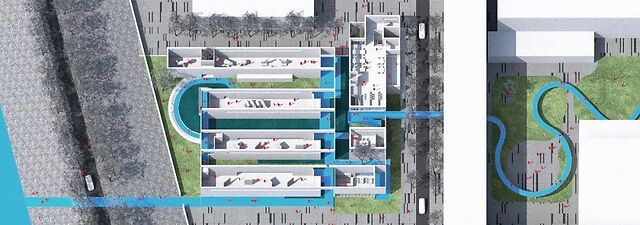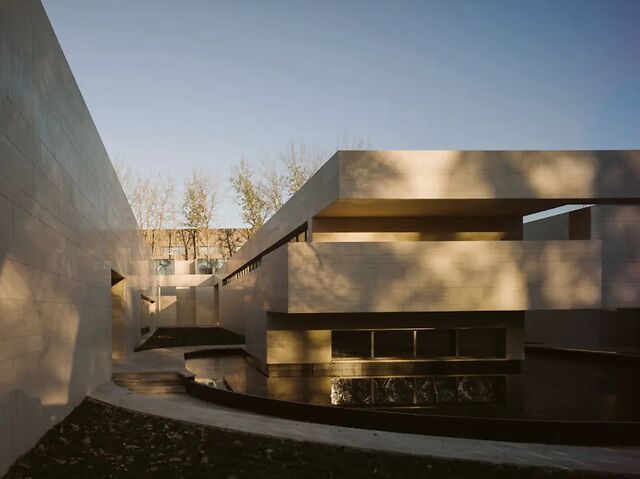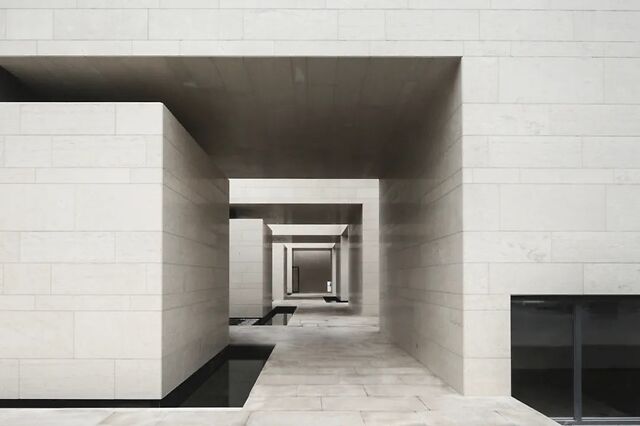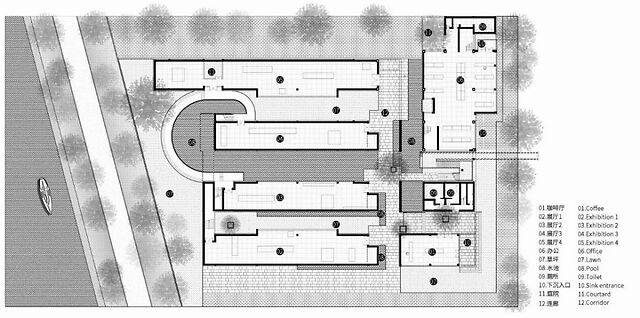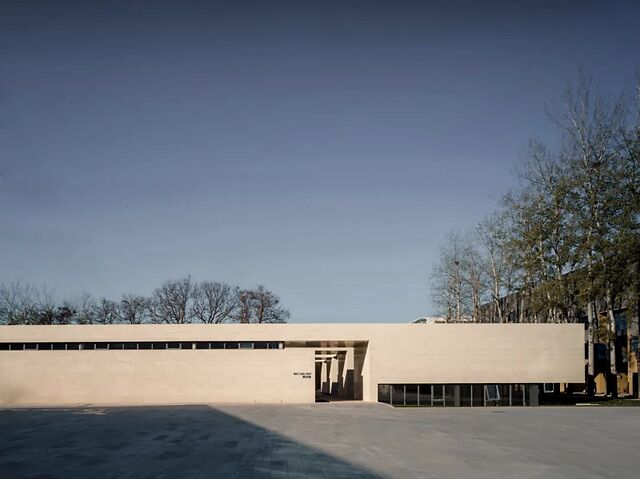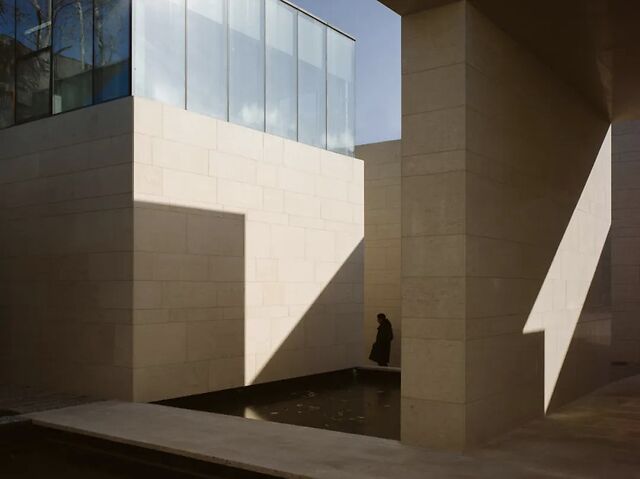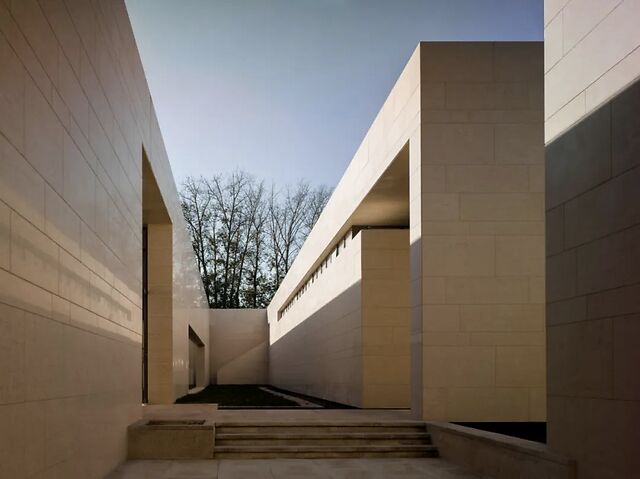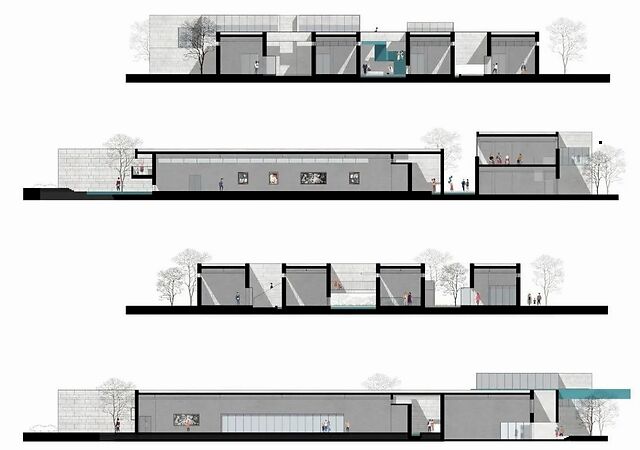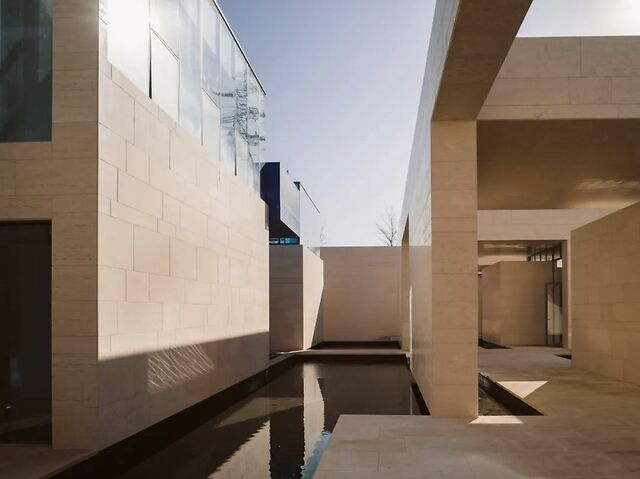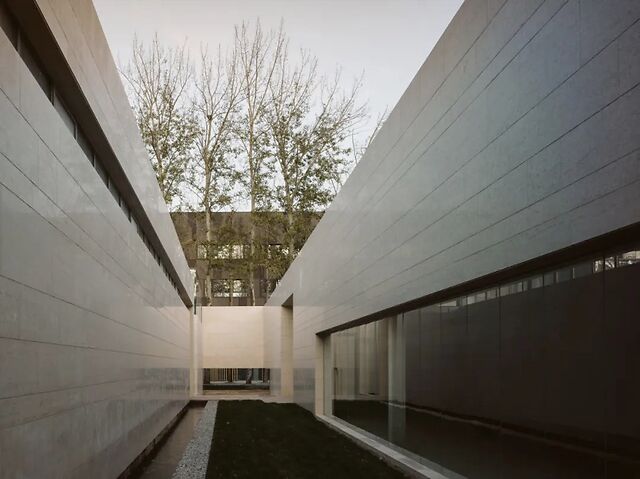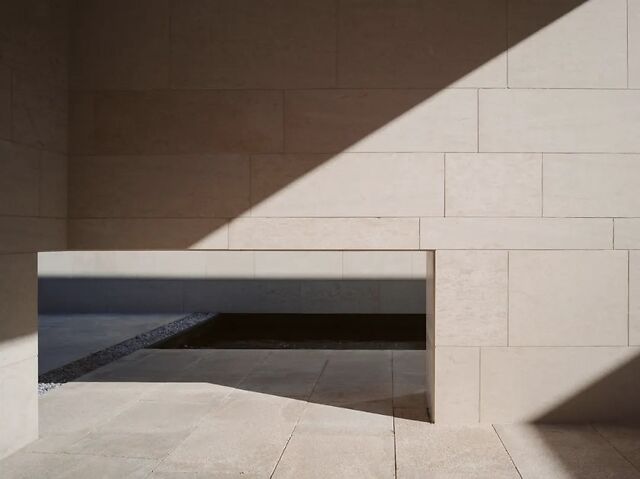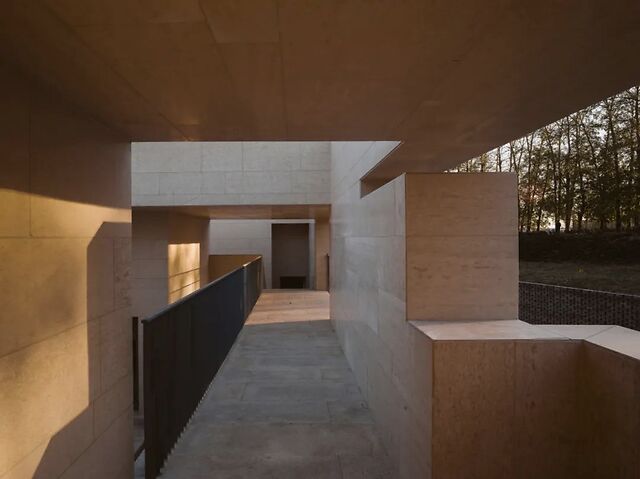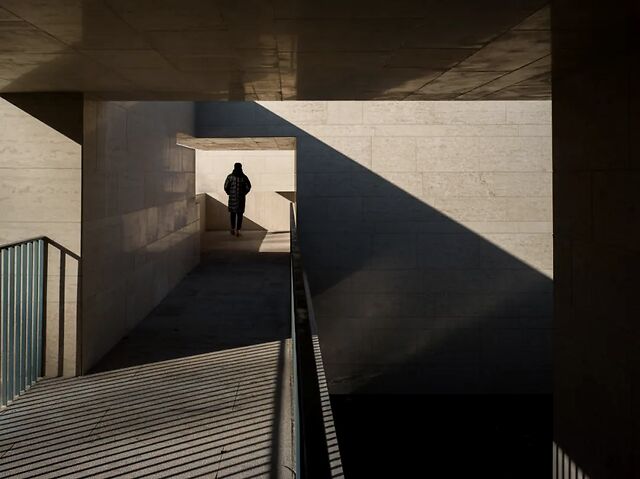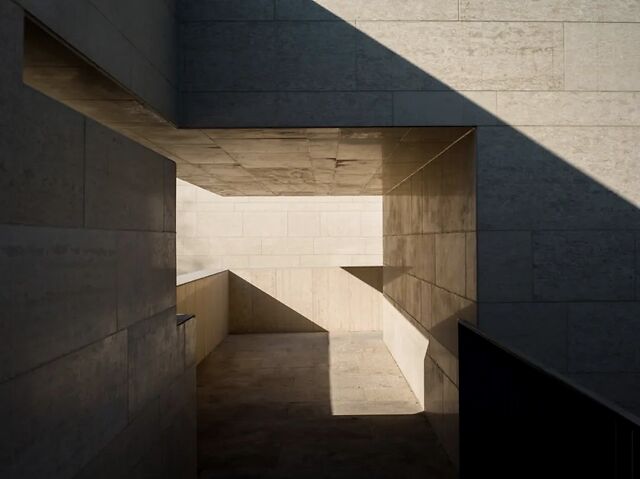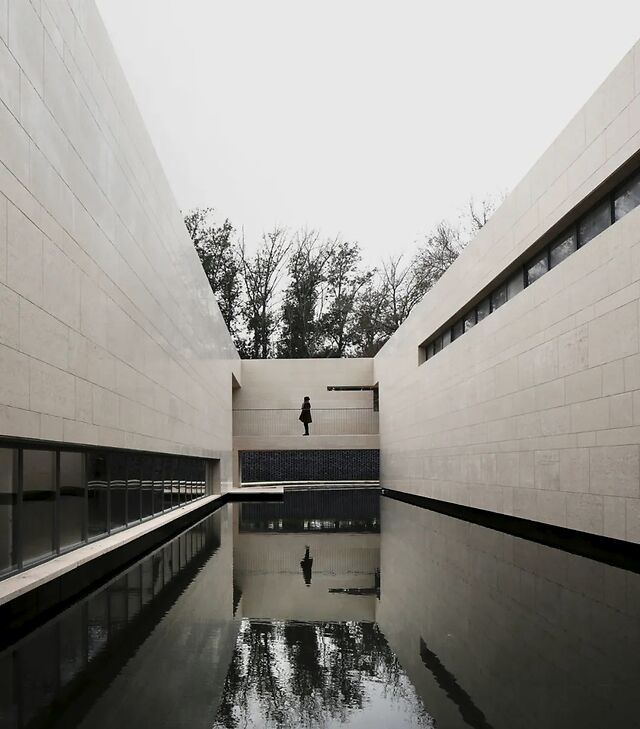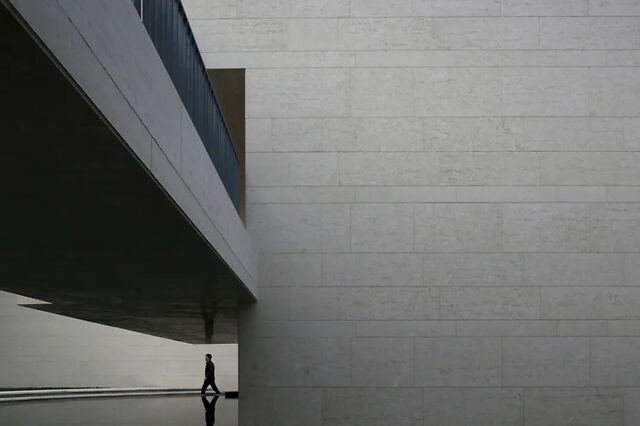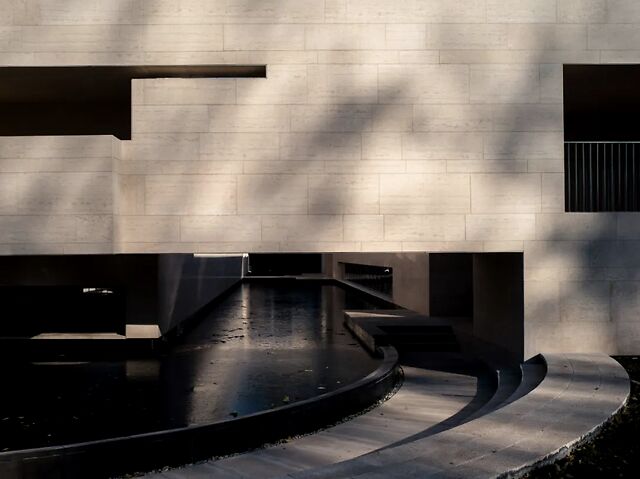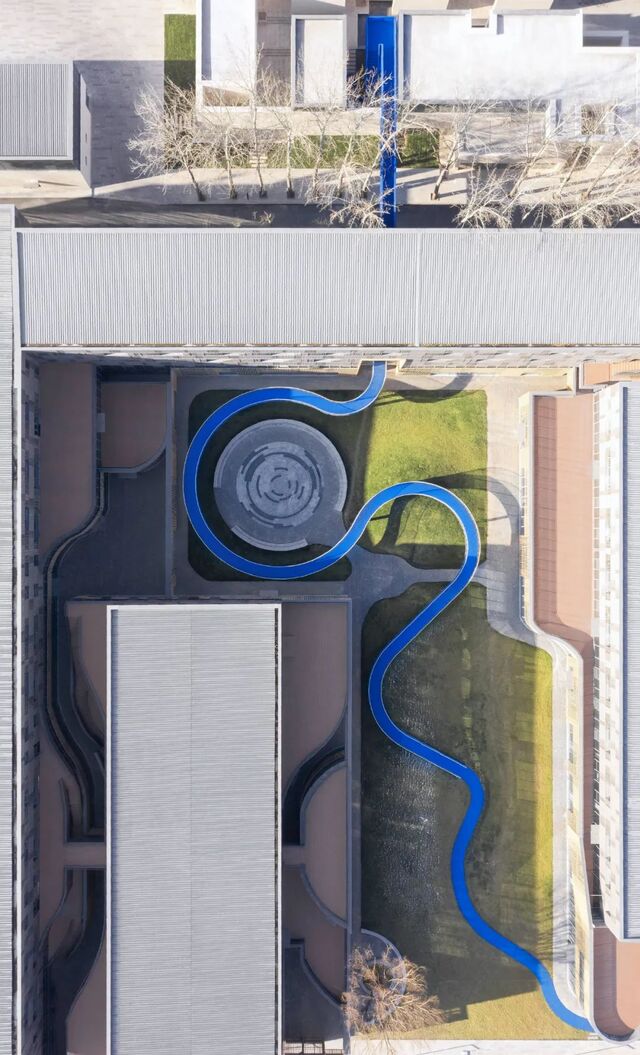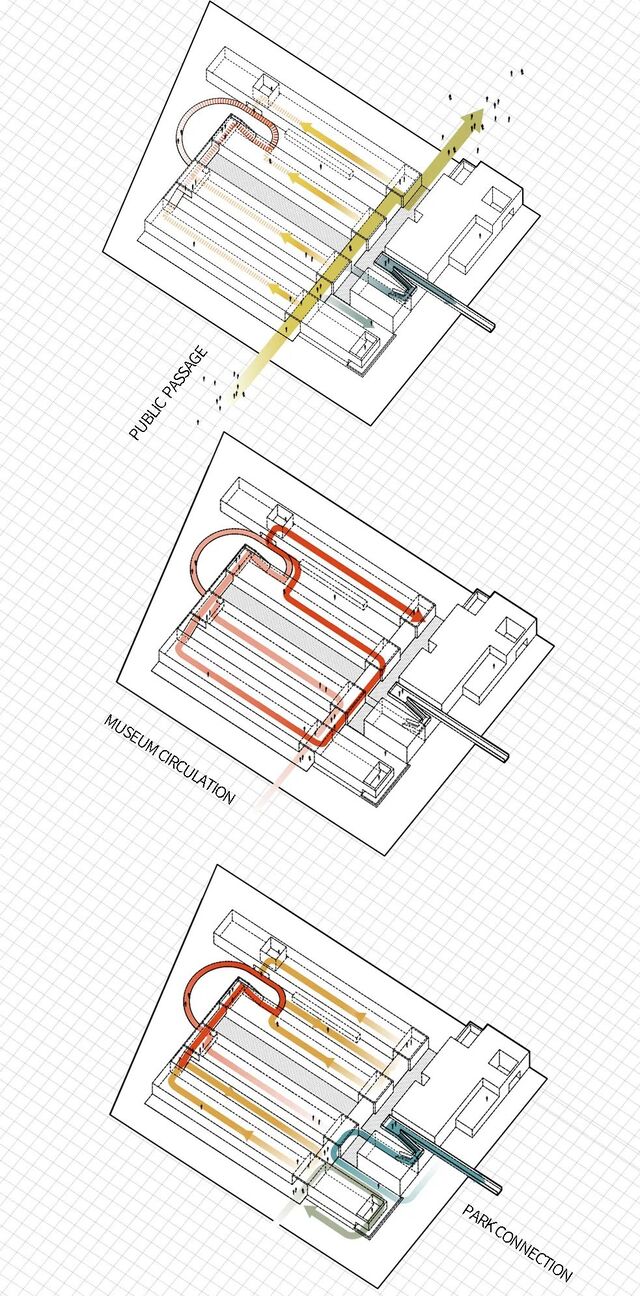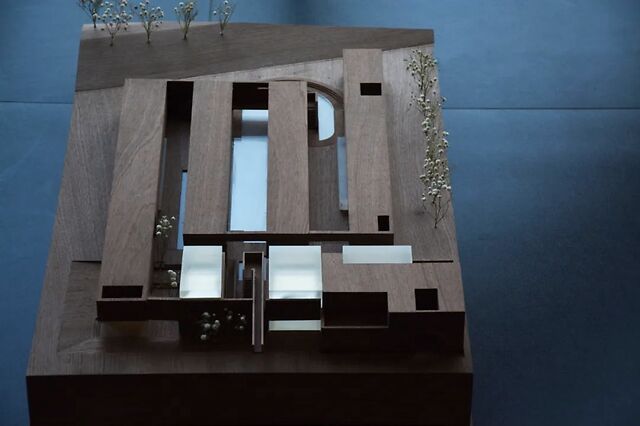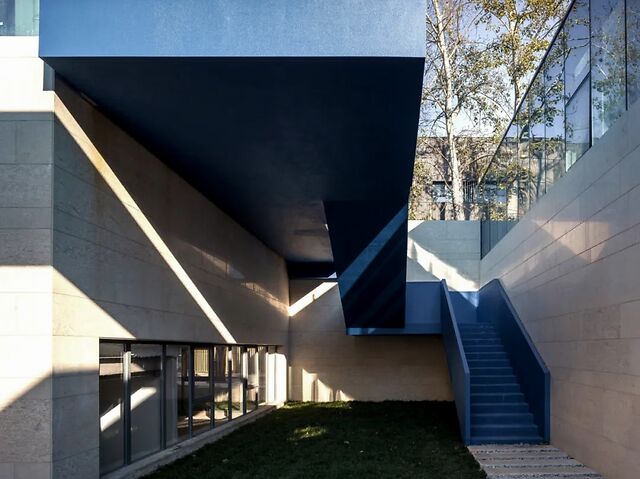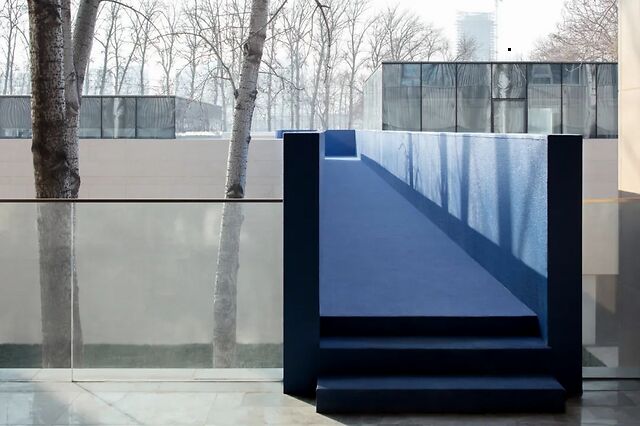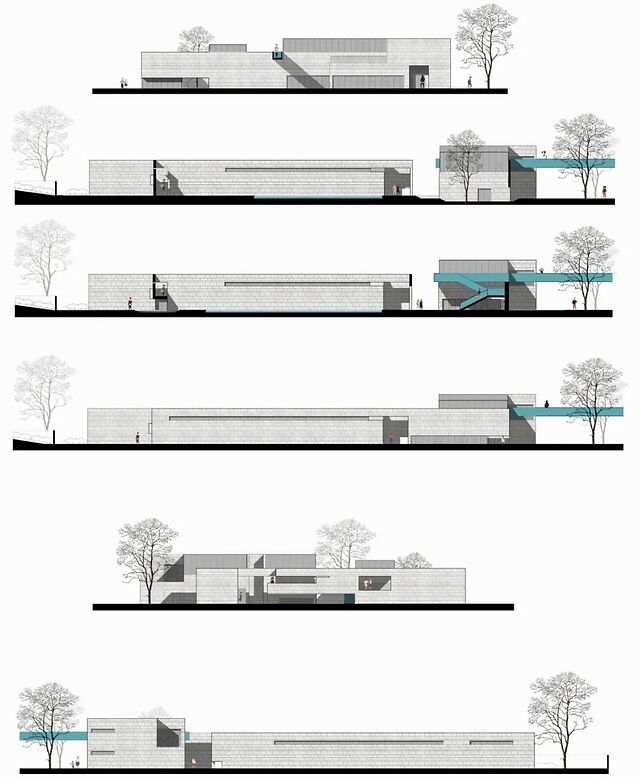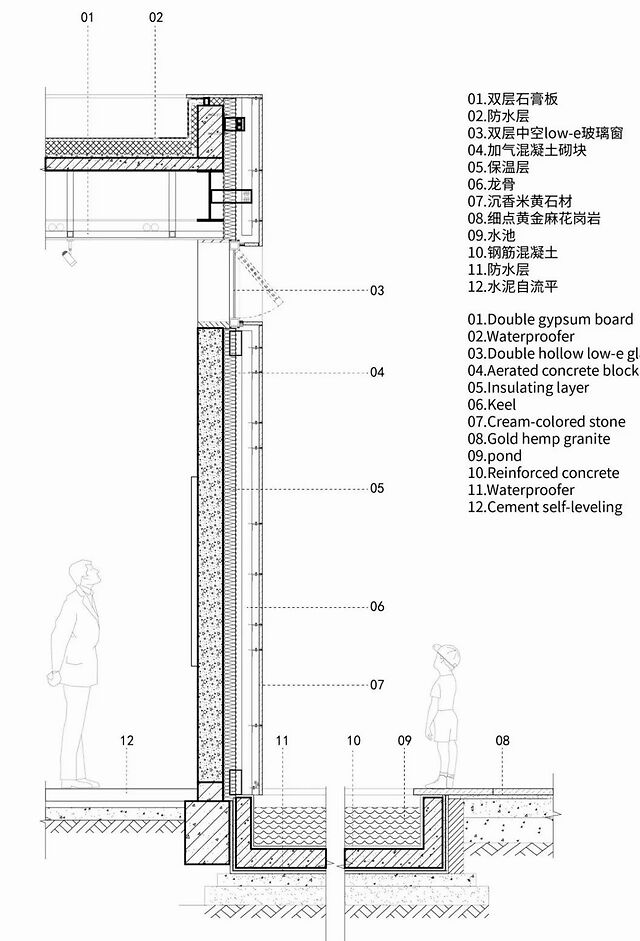*图文由普罗建筑供稿
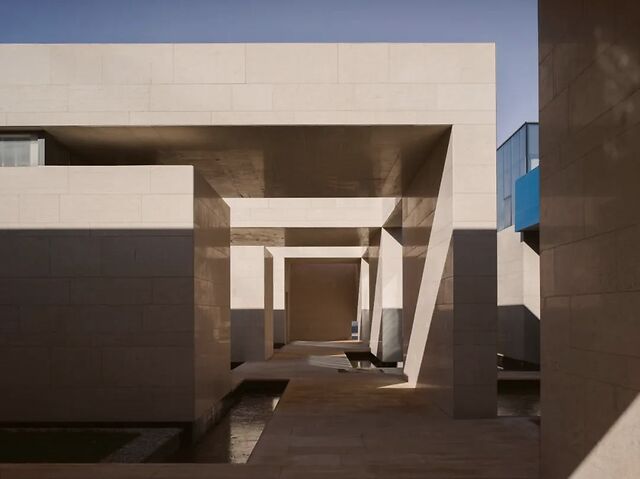
时间的洞口 Cave of Time recalling @ 孙海霆sunhaiting
运河美术馆
Canal Art Museum
设计单位:普罗建筑
建成时间:2019 年
项目地点:北京 通州新潞文创园
将通州废弃工厂改造成“一座没有大门的艺术馆”
Renovate a factory into "a gallery without a gate"
菲美特金属铸造厂是位于通州城关镇的老厂子。20多年来,这些铸造钢铁的坚固厂房矗立在京杭大运河边,留下了一段辉煌的工业时代。随着北京城市副中心确立,这里被规划为了副中心CBD核心商务区,而这个老厂子,在这种开发的浪潮中,是被毁灭,还是能够延续一些文化的基因,也许是标志着北京城市副中心能否真正成为一个城市文化副中心的关键。在成功运作了几个老工业遗产开发项目后,普罗建筑被邀请为这个运河边的老厂区策划一个新的转变,让这里成为北京的“西岸”。
Feimeite metal foundry is an old factory located in Chengguan Town, Tongzhou. Over the past 20 years, these factories for casting iron and steel have stood beside the Beijing-Hangzhou Grand Canal, leaving a glorious industrial era. With the establishment of Beijing Sub Center, it is planned to be the CBD core business district of the sub center. In the wave of development, whether the old factory is buried in the process of history, or whether it can continue some cultural genes, is our concern. After the successful operation of many old industrial heritage development projects, we hope to plan a new transformation for the old factory beside the canal, so that it can become the "West Bund" of Beijing.
改造前基地位置 Location of original site © 普罗建筑
美术馆原始基地-废弃的工厂宿舍区 Original Site of Museum-Abandoned Accommodation @ 常可
改造后的创意园区与美术馆 Creative Park and Canal Art Museum after Renovation @ 夏至 xiazhi
在多番探讨过后,整个工厂最终被策划为一个以办公为主的艺术型创意产业园区。但是,如何处理河岸边最近的一片工厂生活配套区,成为一个难题。
After many discussions, the whole factory is finally planned as an artistic creative industrial park mainly for office. However, how to deal with the nearest factory living area along the river bank has become a problem.
这片由四座一层条形单元宿舍房以及园区小食堂组成的区域,建筑面积小,分散。由于改造建筑轮廓线不能变动,这样的平面布局作为办公几乎很难以利用。那么不作为办公,是否可以引入一座公共的美术馆呢?
This area is composed of four strip-type unit dormitories on the first floor and one small canteen in the park. The buildings in this area are small and scattered. Such a plane layout is almost difficult to use as an office, because the outline of the reconstructed building is unchangeable. So if not as an office, can we introduce an public art museum?
建筑模型-Model @ 常可changke
把整个区域统合起来,使其成为“一座没有大门的艺术馆”,让文化和艺术成为整个产业园区的引擎,同时,给公众一个河边的文化社交空间? 这是一个让人兴奋的想法!
By integrating the whole area, we could building a "art museum without a gate", and give the public a cultural and social space along the river?This is an exciting idea!
一个河边的文化社交空间 Social cultural place by the rive © 普罗建筑
最核心的功能定义下来之后,我们就开始逐步解读场地,使其与我们的功能相契合,匹配出一个新生的建筑体,乃至是我们心目中理想的美术馆原型建筑。
After the definition of the core function, we began to interpret the site gradually, in order to match our function, and then match a new building, even the ideal architectural prototype of art museum in our mind.
风光水在这里交汇 Wind, light, water join together in the museum field @孙海霆sunhaiting
加法到减法的转换:
从“建筑群”到“一个建筑”
“外部”展场如何成为“内部”艺术洞穴
The transformation from addition to subtraction:
from the empty courtyard to the interrelated tunnel
from the enclosed exhibition hall to the public art Labyrinth
通过一系列的“挖出”操作,形成一系列凹陷的洞穴。这些“洞穴”将原来展厅群的外部空间,实质上转化为完整美术馆的内部空间。“洞穴”组合成了贯穿整体的人工“隧道”。“隧道”被每块巨石展厅所围合,时间,空间,风,声音,水都在这里交汇。这种如同行走在结构内部的感受,唤起了艺术的原始冲动,形成了身体层面的艺术场域。时间在这里仿佛不再是单一线性的元素,而成了一种循环。
The original buildings are only "exhibition-units group" but not "an art museu" . If we don't regard these buildings as the "collection" of the volumes, but regard the "empty" parts between the volumes as the "excavation" of the whole, that is to say, turning the addition into subtraction, we will get a "whole" art museum.
从加法到减法-空间生成图解- From Addition to Subtraction-Diagram of Spatial Generation
原本场地中分散的建筑体量只能称之为“展厅群”,却无法成为“一座美术馆”。如果我们不将这些建筑体看成体量的“集合“,而将体量之间的“空”的部分看成是在一个整体上的“挖出”,也就是将加法转化为减法,我们就得到一个“整体”的美术馆。
Through a series of "digging" operations, caves are formed at the original disconnection. These caves transfer the "exterior space" of "exhibition-units group" into "interior space" of a general unified art museum. Caves are combined into an artificial "tunnel" running through the whole, which is surrounded by each exhibition hall. Time, space, wind, sound and water all meet here. During a walk, you can experience four alternations of venues, courtyards, venues and courtyards again on both sides. Time seems to be no longer a single linear element, but a cycle.
“切削出”的隧道 Cutting-out Tunnel @ 常可changke
一层建筑平面图-Building Plan © 普罗建筑
朝向广场的水平建筑体-Horizontal volume of Building @ 孙海霆sunhaiting
朝向北侧的入口 Building Entrance on North side @ 孙海霆sunhaiting
光影构造的引力场 Light and Shadow construct gravitational field @ 孙海霆sunhaiting
原本静置的排屋,被组织成一组相互锚固的巨石与石洞。这些交错的“隧道”成为周边城市空间的交汇点,也构成了美术馆的室外公共迷宫。迷宫空间这种古老的空间体验的探索感是一般的功能效率空间所无法比拟的。
The original row house is organized into a group of mutually anchored boulders and caves. These staggered "tunnels" become the intersection of the surrounding urban space, and also constitute the outdoor public maze of the art museum. Labyrinth space, an ancient sense of space experience, is incomparable to the general functional efficiency space.
巨石走廊 Giant Rock Corridor @ 孙海霆sunhaiting
通过构建光影“迷宫”空间,传统封闭的美术馆空间就成为了开放式的户外“公共艺术场域”,其展览与展品,与展示方式,与参观互动的游客都更紧密的有所关联,而不是一个孤零零的精美建筑体。一个鲜活的美术馆由此诞生。
By constructing "labyrinth" space of light and shadow, the traditional closed art museum space has become an open "public art field". Its exhibitions and exhibits, exhibition modes and visitors are related more closely to each other, rather than a single and exquisite building. A lively art museum was born.
建筑剖面示意 Sections © 普罗建筑
光影构造的引力场 Light and Shadow construct gravitational field @ 孙海霆sunhaiting
隧道中的室外展区 Outdoor Exhibition Area of Tunnel @ 孙海霆sunhaiting
为了更好的体现巨石迷宫的光线与岁月感,我们选择了沉香米黄砂岩作为外墙的主材,并在分隔上做了大量的研究对比,并做了一比一的真实比例样墙,以使得最后美术馆呈现一种最大化的“完型”感。地面为了与之匹配映衬,我们也用了芝麻岩并做了相应的模数分隔处理。
In order to reflect the light and time sense of the stone maze better, we chose beige sandstone as the main material of the exterior wall, and made a lot of research and comparison on the separation, and made a real scale sample wall one to one, so as to make the final art museum present a maximum sense of "completion". In order to match the exterior wall, sesame rock with the corresponding modulus separation is used on the ground.
地面花岗岩石材与墙面石材的融合 The Fusion of Ground and Wall stone @ 孙海霆sunhaiting
被吸纳的风景:
水系、架高层、空中廊与流动的人流
Absorbed scenery:
Water system, elevated layer, overhead corridor and flowing people
运河美术馆其实很特殊,它虽然体量很小,却并非是一个自给自足的封闭单元,它既是园区内部的一部分,又是园区开放的窗口,同时又由于可以和外部隔岸相望,因此美术馆的定位从一开始就是一种开放空间与箱庭空间的融合,是外部与内部视角的相互转化。
In fact, the Canal Art Museum is very special. Although the volume is small, it is not a self-sufficient closed unit. It is not only a part of the park, but also a window open to the park. At the same time, because it can be separated from the outside, the orientation of the art museum is a kind of integration of open space and box space from the very beginning , which is the mutual transformation of external and internal perspectives.
二层平台与被吸纳的风景 second floor platform and absorbed scenery @ 孙海霆sunhaiting
再回到场地本身,虽然这部分体量依旧矗立在园区围墙内,但是它特有的地形高差,使得美术馆一直和外界的运河堤岸形成了一种特别的隔(物理位置上的分隔)与不隔(视线上的沟通)的关系。因此在靠近运河的一侧,我们设计了架高半层的外廊,与地面的石洞隧道遥相呼应。
Back to the site itself, although this part of the museum still stands in the park, its unique topographic height difference makes the museum form a special relationship with the external canal embankment, which strikes a balance between separation (separated physically) and non-separation (separated visually).
二层平台的明暗创造空间深度 The Light and dark create deepness of space @ 孙海霆sunhaiting
在这个架高的层面上,我们可以越过园区的围墙与墙外的车流人流共享运河的美景,吸纳其成为美术馆的外部环境。同时,这些架高的连廊也是将几个独立展厅串联成一条完整又丰富的参观流线的重要一环。
So on the side close to the canal, we designed a half raised veranda, which corresponded to the stone tunnel on the ground. On this high level, we can share the beauty of the canal over the fence with the traffic outside the wall, and absorb it as the external environment of the art museum. At the same time, these elevated verandas are also an important part of connecting several independent exhibition halls into a complete and rich flow line for visitors.
光线对于空间的“切削” The "cutting-out" by light @ 孙海霆sunhaiting
我们为每条展馆都设计了不同的水系,水的流动也在静静引导着人们不断探索。在第三条展厅的后部形成了一个半圆形的无边水池,在这里建筑与围墙,弧形的水池一起构成了一个丰富的广场空间。
We have designed different water systems for each exhibition hall. The flow of water is guiding people to explore constantly. In the back of the third exhibition hall, a semicircle boundless pool is formed. Here, the building, the wall and the arc pool form a rich square space.
架高层带来穿透的风景 The vivid texture of the Sandstone @ 孙海霆sunhaiting
地面一层,下沉层,架高层,这三个空间层次让单层的美术馆获得了垂直向的立体游览体验。在展馆内,通过低窗的设计,建筑间的水系也成为展馆内的展示元素,使室内外展区模糊了边界。
The first floor, the sinking floor and the elevated floor are three spatial levels, which enable the single-storey art museum to get a vertical three-dimensional tour experience. By the design of low windows in the exhibition hall, the water system between the buildings also becomes the exhibition element in the exhibition hall, blurring the boundary between indoor and outdoor.
沉思之廊 The thinking passage @ 常可 changke
除了美术馆自己内部的设置和连接。还有一条贯穿整个园区的“空中之廊”,这条流线从园区中央办公区的二层廊桥跨越而出,再下到地面进入到美术馆的入口售票厅。因此介由不同的角度进入美术馆内会看到不同的景观,体验到不同的水,与地面,与墙面,与参观的人流的种种不同关系。
In addition to the setting and connection of the museum itself, there is also an "air corridor " running through the whole park. This streamline crosses from the second-floor corridor bridge in the central office area of the park, and then descends to the ground to enter the museum's entrance ticket hall. Therefore, if you enter the art museum from different angles, you will see different landscapes, experience different relationships between water, ground, wall, and visitors.
多重的穿透 The multiple penetration @ 常可 changke
水系穿透形成停留空间 Water penetration as resident place @ 孙海霆sunhaiting
这些不同自然是十分重要又特殊的体验,也是我们对传统中国园林的一种转译尝试。同时,这些外部联结将人不断引入美术馆的“公共艺术场域”中,使人的活动本身成为了展品。
These different natures are very important and special experiences, and also our translation of traditional Chinese gardens. Meanwhile, these external connections lead people into the "public art field" of the art museum, making people's activities become exhibits.
通向的美术馆的公共艺术廊道 Air corridor leading to the museum @ 夏至 xiazhi
流线示意图 Circulation diagram © 普罗建筑
空中之廊模型 Air corridor model @ 常可changke
空中之梯进入美术馆 Air stair case into museum @ 孙海霆sunhaiting
空中之廊入口 Air corridor entrance @ 夏至 xiazhi
生活是没有大门的艺术
Life is "Art without Gate"
我们一直认为,改造是一个起点,一种途径。鲜活而纯粹的艺术不应该被其手段所束缚,而应该导向更多义的建构。如何回应建筑的场所,如何创造更开放的生活,是我们设计探讨的重点。我们相信场地本身就有它诉说故事的力量,只是静静等待着能与它们交流的设计师的出现。
We have always believed that transformation is only a starting point and a way. Fresh and pure art should not be bound by its means, but should lead to a more polysemous construction. How to respond to the building site, how to create a more open life, is the focus of our design.
而运河美术馆的力量就在于时间与场所的对话。通过对原始场地空间逻辑的继承与转译,我们将分散的“展馆群”构建成给予人身体包裹性的“美术馆整体结构”,同时,将美术馆彻底变成了生活中的街道空间。这说明,未来的艺术空间将更关注于回归人原始内在的体验与感受,而不仅仅停留于对艺术品本身的展示。通过运河美术馆的项目可以看到,当艺术与生活相交融,艺术就不会存在大门。
We believe that the site itself has the power to tell stories, just waiting for the emergence of designers who can communicate with them. Trough translation of the context of original site, we transfer the "group of exhibit-units" into a whole "museum without gate". It indicates that the future of art museum should be a museum of life.
立面图 elevations 美术馆北侧入口 North entrance @ 孙海霆sunhaiting
剖面大样图 section detail ©普罗建筑
与运河关系剖面大样图 section detail © 普罗建筑
项目信息
项目地点:北京市通州区
项目性质:美术馆
设计周期: 2018.8-2018.10
建造周期:2019.3-2019.11
建筑面积:1900.57平方米
业主单位:通州新潞文创园
设计单位:普罗建筑 officePROJECT
主持设计师:常可,李汶翰,刘敏杰
设计团队:姜宏辉,张昊,赵建伟,冯攀遨,袁博,林旺铭,陈斌斌,魏斌(驻场),王佳桐,扈诗雨,吴香丹
摄影:孙海霆,夏至,常可
Location: Tongzhou, Beijing
Project type: art museum
Design period: 2018.8-2018.10
Construction period: 2019.3-2019.11
Building area:1900.57sqm
Client: Tongzhou Xinlu Creative
ParkArchitect: officePROJECT
Principal Architect: Chang Ke, Li Wenhan, Liu Minjie
Design Team: Jiang Honghui, Zhang Hao, Zhao Jianwei, Feng Panao, Yuan Bo, Lin Wangmin, Chen Binbin, Wei Bin, Wang Jiatong, Hu Shiyu, Wu Xiangdan
Photography: Sun Haiting, Xiazhi, Chang Ke
主要材料:
25mm厚干挂沉香米黄石灰岩 25mm thick dry hanging cream-colored limestone
40mm厚细点黄金麻地面石材 40mm thick fine point gold granite
6 low-e+12+6双层中空玻璃 6 low-e +12+ 6 Double insulating glass
6+6超白夹胶安全玻璃6+6 Super white laminated safety glass

